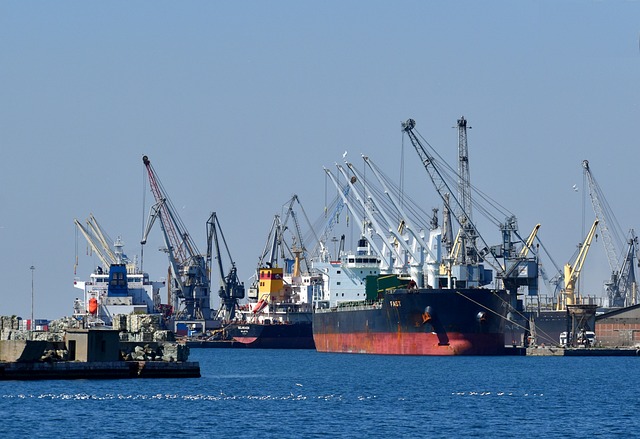Insulated containers, integrated with temperature monitoring sensors, are crucial tools across industries, enhancing efficiency and safety in handling temperature-sensitive goods like food, pharmaceuticals, and chemicals. These containers preserve product integrity, reduce waste, and extend lifespans, lowering operational costs. Equipped with real-time data tracking, they offer precise temperature control and immediate alerts for anomalies, minimizing spoilage and waste. Beyond primary applications, insulated containers are used in logistics, research, and events like cold chain management and field experiments, driven by high demand on both new and used units globally.
Insulated containers have transformed how we transport and store temperature-sensitive goods, offering unparalleled protection against environmental variations. Equipped with advanced built-in temperature monitoring sensors, these containers are taking this innovation a step further. This article delves into the world of insulated containers, exploring their multifaceted role, benefits, and the technical intricacies behind integrating temperature sensors. We’ll also examine real-world applications across various industries that are leveraging this cutting-edge technology to maintain product integrity and enhance operational efficiency.
- Understanding Insulated Containers: Their Role and Benefits
- Integrating Temperature Monitoring Sensors: Why It Matters
- Technical Aspects: Sensor Placement and Data Collection
- Applications: Industries Adopting Insulated Containers with Built-in Sensors
Understanding Insulated Containers: Their Role and Benefits

Insulated containers have emerged as indispensable tools in various industries, playing a pivotal role in enhancing efficiency and safety. These specialized containers are designed to maintain optimal temperatures, making them ideal for transporting and storing temperature-sensitive goods. Whether it’s perishable food items, pharmaceuticals, or chemicals that require precise climate control, insulated containers offer a robust solution. Their primary function is to provide a secure and controlled environment, ensuring the integrity of the products inside.
The benefits of using insulated containers are multifaceted. They help reduce waste by minimizing spoilage and extend product lifespans, thereby lowering operational costs. With features like built-in temperature monitoring sensors, users can track and maintain specific conditions, preventing any adverse effects on the contents. Moreover, these containers are versatile; they can be customized for various purposes, from cold storage to modular offices, catering to diverse business needs. The market for insulated containers is thriving, with many dealers and suppliers offering new, used, and custom-made options, making it easier than ever to access this valuable equipment.
Integrating Temperature Monitoring Sensors: Why It Matters

Integrating temperature monitoring sensors into insulated containers is a game-changer for various industries, ensuring optimal conditions for sensitive cargo. These sensors play a pivotal role by providing real-time data on internal temperatures, allowing users to monitor and control the environment within the container effectively. This feature is especially crucial for industries relying on temperature-sensitive goods, such as pharmaceuticals, food and beverage, and chemical transportation.
With precise temperature monitoring, businesses can prevent costly damages caused by extreme conditions during transit or storage. By utilizing sensors, they can quickly identify deviations from set points, enabling them to take corrective actions promptly. Moreover, this technology aids in maintaining product integrity, ensuring that perishable items remain within their optimal temperature ranges, thereby reducing waste and preserving quality. When considering the diverse range of insulated containers available, whether new, used, or custom-made, incorporating temperature monitoring sensors is a strategic move to enhance efficiency and safety in temperature-controlled transportation and storage solutions.
Technical Aspects: Sensor Placement and Data Collection

The technical heart of any insulated container lies in its sensor placement and data collection system. High-accuracy sensors are strategically positioned both internally and externally to monitor temperature, humidity, and other environmental factors. These sensors, often wireless, transmit real-time data to a central control unit, ensuring constant oversight. Advanced algorithms process this data, allowing for precise temperature control and immediate alerts in case of anomalies.
This meticulous setup goes beyond mere monitoring; it enables users to optimize conditions within the insulated containers. Whether for perishable goods, vaccine transportation, or on-site cold storage, data collected through these sensors guides efficient operations. Furthermore, tracking changes over time aids in maintaining quality standards and identifying areas for potential improvements, making insulated containers a versatile and indispensable asset across various industries, from logistics to healthcare.
Applications: Industries Adopting Insulated Containers with Built-in Sensors

Insulated containers equipped with built-in temperature monitoring sensors are transforming various industries by offering enhanced control and safety in transportation and storage. These innovative solutions are particularly valuable in sectors where maintaining specific temperature ranges is critical, such as pharmaceuticals, food and beverage processing, and healthcare. By integrating sensors that provide real-time data on internal conditions, companies can ensure the integrity of their products during transit and storage, minimizing spoilage and reducing waste.
Beyond these primary applications, insulated containers with built-in sensors find utility in diverse fields like logistics, research, and even outdoor events. For instance, in cold chain management, these containers enable efficient temperature-controlled transportation of perishable goods over long distances. Similarly, scientific researchers can leverage them for storing sensitive experiments or samples during field work, while event organizers may rent insulated shipping containers to transport and store food and beverages at the site, ensuring a seamless experience for attendees. The versatility of these containers, coupled with advancements in sensor technology, positions them as a versatile asset across numerous industries, driving the demand for both new and used insulated containers on the global market.
Insulated containers equipped with built-in temperature monitoring sensors represent a significant advancement in the transportation and storage of temperature-sensitive goods. By integrating these innovative technologies, industries can ensure optimal product quality, reduce waste, and enhance efficiency across various sectors. As the adoption of insulated containers continues to grow, their role in maintaining supply chain integrity becomes increasingly vital, paving the way for a more sustainable and reliable future in logistics management.
